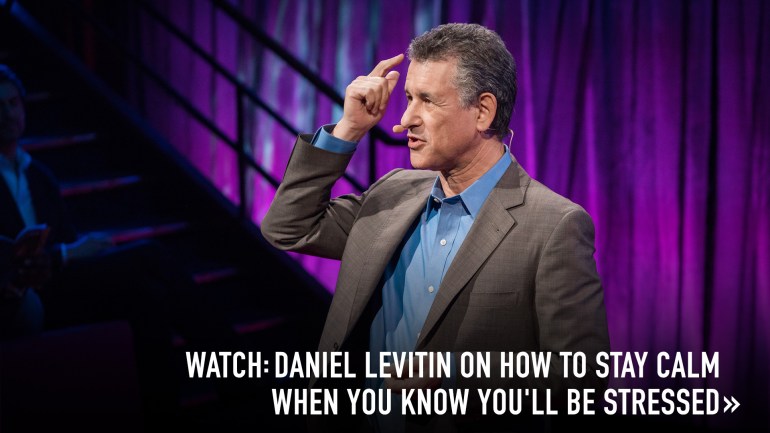
What looks like (and reads like) the truth may be riddled with lies if you look more closely, says neuroscientist Daniel J. Levitin.
We’ve created more human-made information in the last five years than in all previous human history. Unfortunately, often found next to things that are true are an enormous number of things that are not — in websites, videos, books and on social media. This is not a new problem; misinformation was documented in Biblical times and in classical Greece. The unique problem we face today is that misinformation has proliferated. It is devilishly entwined on the Internet with real information, making the two difficult to separate. And misinformation is promiscuous — it consorts with people of all social and educational classes and turns up in places you don’t expect it to.
Here are four ways in which misinformation may hide in plain sight.
Lies are tucked in among truths
When it comes to snowing people, one effective technique is to get a whole bunch of verifiable facts right and then add one or two that are untrue. The ones you get correct will have the ring of truth to them, and any intrepid people who decide to check them will be successful. So you just fold in one or two untruths, and many people will haplessly go along with you.
Consider the following nine-step argument:
1. Water is made up of hydrogen and oxygen.
2. The molecular symbol for water is H20.
3. Our bodies are made up of more than 60 percent water.
4. Human blood is 92 percent water.
5. The brain is 75 percent water.
6. Many locations in the world have contaminated water.
7. Less than 1 percent of the world’s accessible water is drinkable.
8. You can only be sure that the quality of your drinking water is high if you buy bottled water.
9. Leading health researchers recommend drinking bottled water, and the majority drink bottled water themselves.
Assertions one through seven are true. Assertion eight doesn’t follow logically, and assertion nine, well . . . who are the leading researchers? And what does it mean that they drink bottled water themselves? It could be when it is offered to them, they’ll drink it. Or does it mean that they avoid all other forms of water? There is a wide chasm between these two possibilities.
The fact is, bottled water is at best no safer or healthier than most tap water in developed countries, and in some cases less safe because of lax regulations. This is based on reports by a variety of reputable sources, including the Natural Resources Defense Council, the Mayo Clinic and Consumer Reports. Of course, exceptions exist (e.g., Flint, Michigan). But in general the argument of pseudoscientific health advocates, as typified by the above string of statements, does not, er, hold water.
Websites masquerade under misleading names
In a 2014 congressional race in Florida, the local GOP offices created a website with the name of their Democratic opponent, Alex Sink, to fool people into thinking they were giving money to her; in reality, the money went to her rival, David Jolly. The site, contribute.sinkforcongress2014.com, used the color scheme of Sink’s site and featured a smiling photo of her that was very similar to the one used on her site. The GOP site did say that the money will be used to defeat Sink, but many people might not have taken the time to read such things carefully. The most eye-catching parts of the GOP site are the large photo of Sink and the headline “Alex Sink Congress.” Not to be outdone, Democrats responded by copying this tactic and creating the site http://www.JollyForCongress.com.
MartinLutherKing.org probably sounds like a site that would provide information about the civil rights leader. Because it is a .org site, you might assume that there is no ulterior motive of profit, and the site proclaims that it offers “a true historical examination” of Martin Luther King. Wait a minute. An old joke goes, “How do you know someone is lying to you? Because they begin with the phrase to be perfectly honest.” Honest people (or websites) don’t need to preface their content this way.
If you read more closely, you’ll see that MartinLutherKing.org contains a large assortment of distortions, out-of-context quotes, and biased rants. Who runs the site? Stormfront, a white supremacist, neo-Nazi hate group. If a site looks fishy to you, click around until you see what entity owns it. Another quick way to check out a site: do a Google search to see who else links to that web page. Type “link:” followed by the website URL, and Google will return all the sites that link to it.
Numbers are given without context
Even counting the airplane fatalities of the 9/11 attacks in the US, air travel continues to remain the safest transportation mode, followed closely by rail transportation. The chances of dying on a commercial flight or train trip are next to zero. Yet some people avoid airplanes when they see statistics like this one: More people died in plane crashes in 2014 than in 1960.
The statistic is correct, but it’s not the most relevant statistic to consider. It turns out that the number of airplane deaths was higher because there were so many more flights in 2014 than 1960. If you really want to figure out how safe air travel is, looking at the total number of deaths will not help. You need to look at the death rate — the deaths per miles flown, or deaths per flight, or something that equalizes the baseline.
Claims rest on false sources
Unscrupulous writers often count on the fact that most people don’t bother reading footnotes or tracking down citations. Maybe a company wants its website to convince people that its skin cream has been shown to reverse the aging process by ten years. So an employee writes an article and peppers it with official-looking footnotes that lead to web pages that are completely irrelevant to the argument. Or they point to reputable articles on relevant sites, like a peer-reviewed journal on aging or on dermatology, even though the referenced article cited says nothing about the product. When a product sounds too good to be true, you should look at its evidence before going any further.
The promise of the Internet is that it is a great democratizing force, allowing everyone to express their opinions and have immediate access to all the world’s information. Combine these two, and you have a virtual world of information and misinformation cohabiting side by side, staring back at you like identical twins — except one of them will help you and the other one will hurt you.
The task of figuring out which one to choose falls on all of us, and it requires careful thinking and something that most of us feel is in short supply: time. Critical thinking is not something you do once with an issue and then drop it. It requires that we update our knowledge as new information comes in. Time spent evaluating claims is not just time well spent. It should be considered part of an implicit bargain we’ve all made.
Adapted from the new book Weaponized Lies: How to Think Critically in the Post-Truth Era, by Daniel Levitin. Reprinted by arrangement with Dutton, a member of Penguin Group (USA) LLC, a Penguin Random House Company. Copyright © Daniel J. Levitin, 2016.















